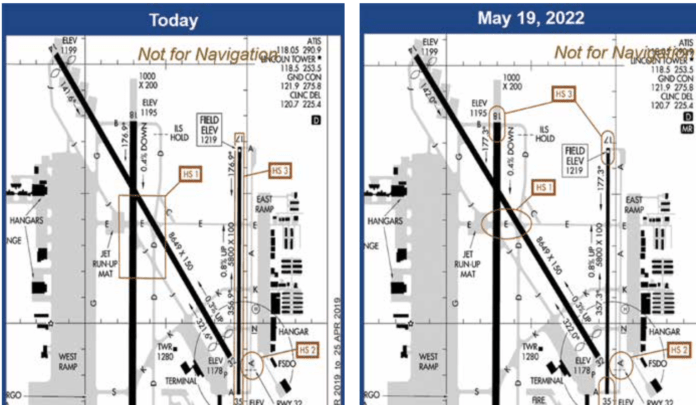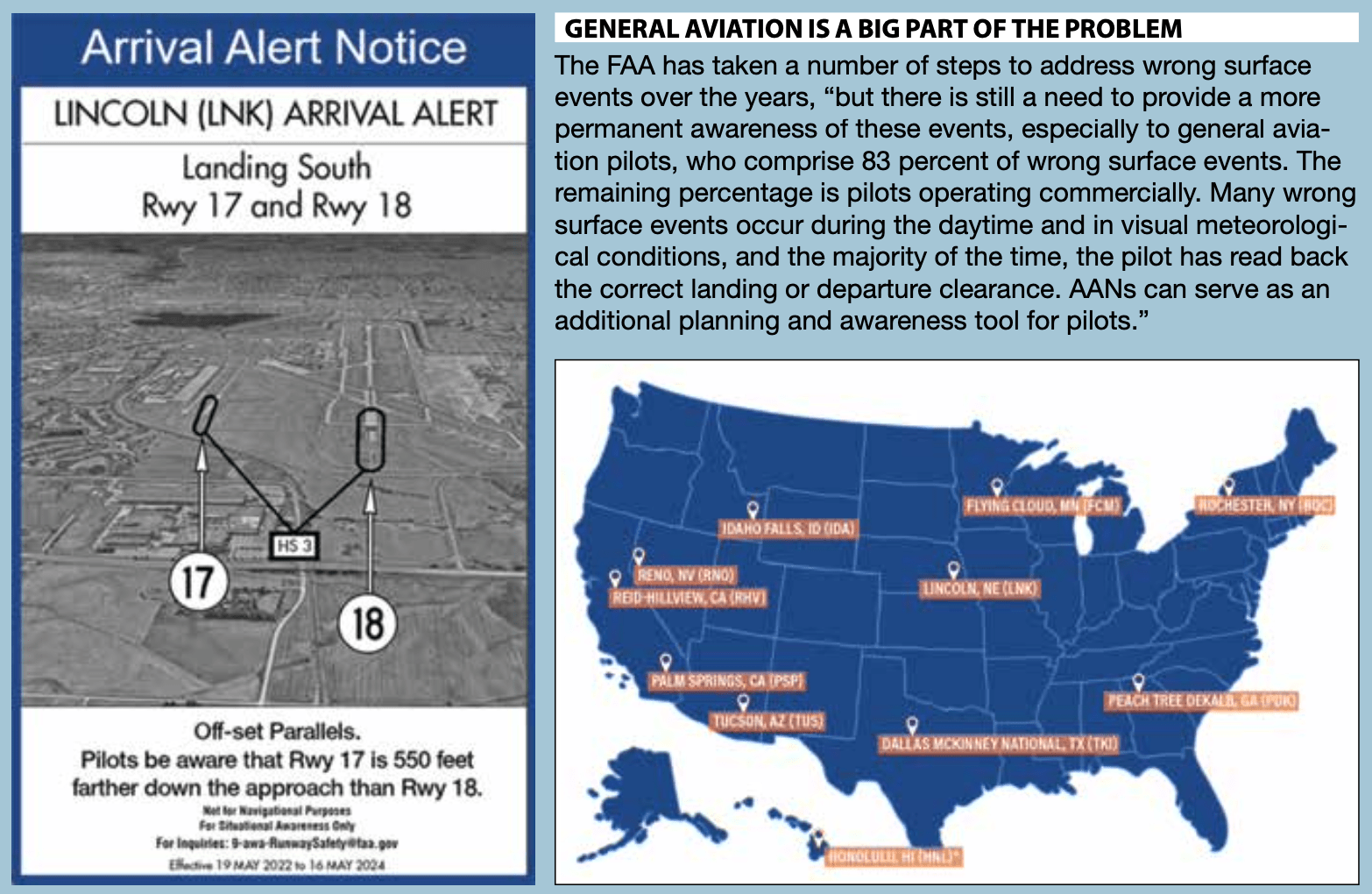
Since about the time two airplanes tried to use the same airport at the same time, runway and taxiway collisions have been a safety issue. With the growth in traffic outpacing construction of new facilities in recent years, the FAA has also noticed greater numbers of what are called “wrong-surface events.” It’s a broad term, covering landings on the wrong runway, improper presence on a runway, getting lost on a taxiway and, of course, ground collisions. The latest in a series of FAA efforts to reduce the rate of these accidents and incidents is establishment of Arrival Alert Notices, AANs.
The agency says AANs “provide a graphic visually depicting the approach to a particular airport with a history of misalignment risk.” In addition to “language describing the misalignment risk area,” as shown in the example provided by the FAA at bottom left, an AAN apparently will include a black-and-white image of the airport as seen during an approach and graphics to supplement the textual description.
The new AANs are slated to debut with the May 19, 2022, charting cycle. It’s not clear how they will be distributed: via the Chart Supplement, as a Notam, as part of a terminal procedure, or through some other means. The map at the bottom of this page depicts the locations for which the first batch of 11 AANs will be published.
Also coming with the May 19, 2022, charting cycle is new symbology to depict what the FAA calls “hot spots,” “a location on an airport movement area with a history or potential risk of collision or runway incursion, and where heightened attention by pilots and drivers is necessary.” Hot spots typically alert pilots to high-traffic or complex surface intersections.
According to the agency, “Currently, there is no standard shape to designate a hot spot on airport diagrams within chart supplements and the Terminal Procedures Publication; they are charted with a variety of squares, rectangles, circles, ovals, and ellipses with no pattern or consistency. Beginning May 19, 2022, the FAA will standardize these symbols to three shapes with two distinct meanings: a circle or ellipse for ground movement hot spots and a cylinder for wrong surface hot spots.”

NTSB: ALASKA’S CTAF AREAS NEED ATTENTION
As part of its investigation into the July 31, 2020, mid-air collision between a de Havilland Canada DHC-2 Beaver and a Piper PA-12 Super Cruiser, near Soldotna, Alaska, the NTSB is issuing two safety recommendations to the FAA about designation and use of common traffic advisory frequency (CTAF) areas. In Alaska, CTAF areas may be designated at locations with high traffic volumes to facilitate advisories and coordination among airborne VFR aircraft.
One of the NTSB’s recommendations might be problematic with operators: “Require all pilots to monitor and communicate their positions on the designated common traffic advisory frequency (CTAF) when entering and exiting dedicated CTAF areas throughout Alaska, as well as near established reporting points and airport traffic patterns within the CTAF area, unless already communicating with air traffic control.”
The second recommendation, to create additional CTAF areas, is designed to standardize frequencies within them. According to the NTSB, “21 airports were within a 30-mile radius of [the Soldotna Airport], with 5 different charted communication frequencies, many of which overlapped.” The NTSB said it’s making this recommendation “so that pilots are more aware of nearby traffic and communicate on a single frequency in one area, thus helping to mitigate the risk for midair collisions.”
“The prevention of midair collisions in Alaska has been a focus for the NTSB and the aviation industry for many years,” the NTSB wrote. “During the period from 2005 to 2020, 14 midair collisions have occurred in the state…. These midair collisions resulted in 35 fatalities and 15 serious injuries.”
The NTSB’s formal recommendations were made February 22, 2022. The FAA typically has 90 days to respond in writing. As of this writing, the NTSB has not yet issued a probable cause determination in the Soldotna accident.



